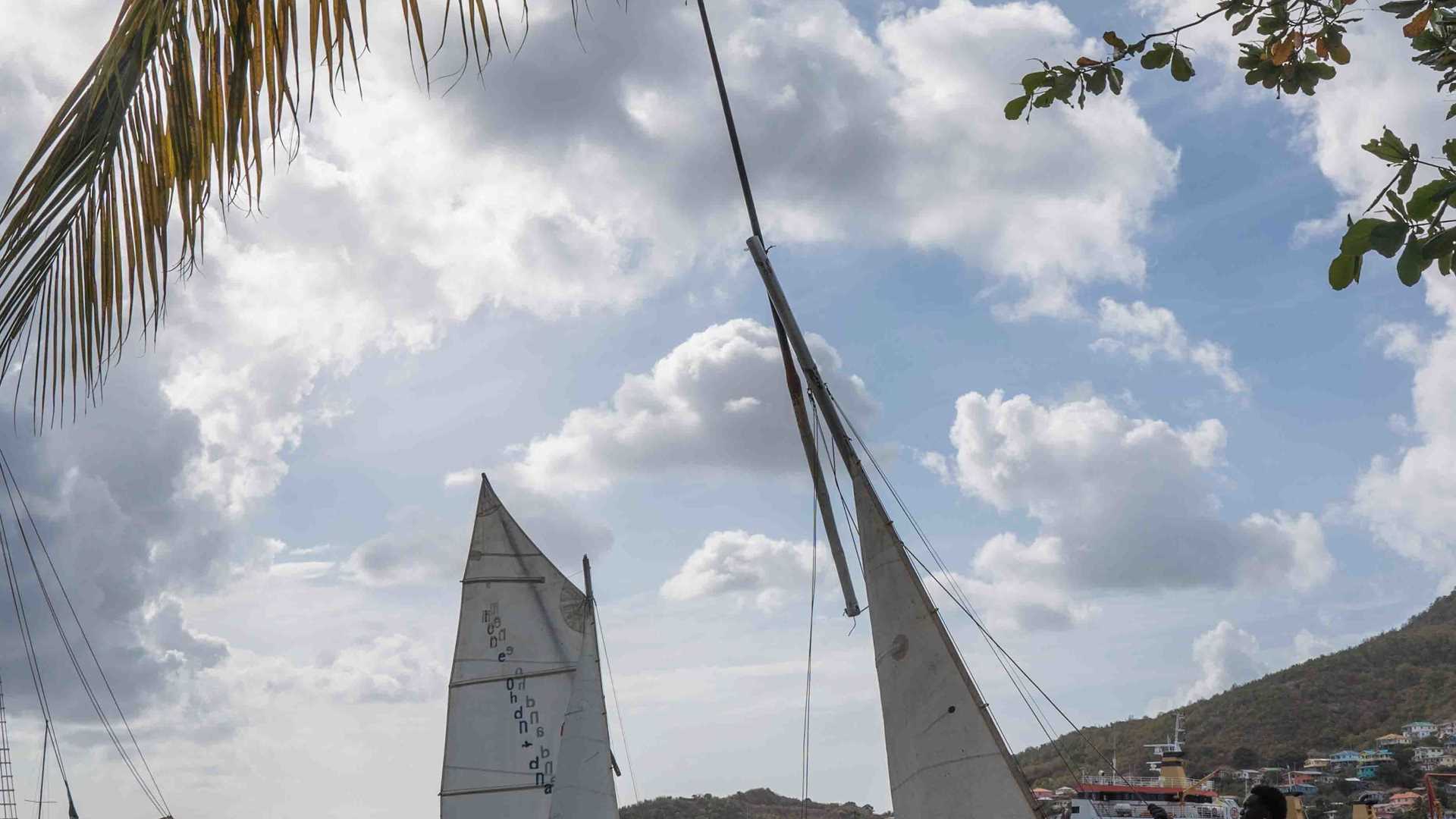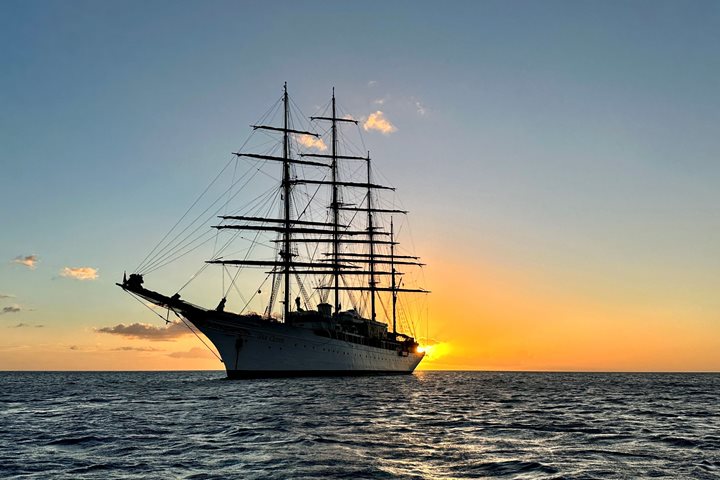We furled sails at 8:45 a.m. and had good speed at seven knots over the ground. I spied St. Vincent in the Grenadines at 11 a.m. Bequia is the largest of these Grenadines but is only about seven square miles. It was settled first by the Taino and then the Carib Indians. The demographics of Bequia today—a substantial Euro-American population living with several local and migrant communities—are unlike many of the other islands we have visited. The first European settlers were French, but Scots were brought over quite early as indentured servants in considerable numbers in the early 18th century. They remained here and appear to be the dominant ethnic group today. There are not many surnames, David, King and Olivier being the most common.
As we came in at 2 p.m., I pointed out the Hamilton Battery. Alexander Hamilton’s father lived in Bequia for some time. After taking Zodiacs into the pier in Admiralty Bay, we were greeted by a main street ringed by small tables selling all sorts of local handicrafts: various carvings from calabashes, bracelets made from coral stone and shiny hard nuts, and scrimshaw from whales. The International Whaling Commission allows the native peoples of Bequia to take four whales a year. Since they hunt in the old way with hand-thrown harpoons in small, open boats they rarely ever meet the quota. The whales supplement the diet of the islanders and they use every bit of it.
We began our visit with a trip to the Rastafarian market, which sells local produce, natural juices, and spices. There we met old friends and practicing Rastas, who were happy to have a photograph taken.
Our next stop was Sergeant’s Model Boat Shop. The Sergeants have been building exquisite model boats for generations, chiefly of the local whaleboats, but some years ago they made a model of Queen Elizabeth’s yacht Britannia which the Prime Minister of Bequia presented to the Queen.
We passed the lovely Anglican Church built in 1824, but unfortunately it was locked. The island likely has at least 10 Christian denominations, along with Muslims and Seventh-day Adventists, but the Anglican Church is the largest. A bookstore was opened and, though it’s small, it has a collection of hard-to-find local books on the Grenadines.
Our final stop is always a hit–Jack’s Bar. This famous watering hole sits directly on Princess Margaret Bay and has to be one of the most idyllic spots in all the Caribbean. There we enjoyed all sorts of fruit punches, some with rum in them! The water in the bay was just right, and the color a crystalline blue. I swam out about 400 yards and still could easily see the bottom 25 feet below. Dinner was served on the Lido Deck and after dinner we were treated to our old friends, the Kings of Strings, a group of four local (and elderly) musicians who can bring down the house.









